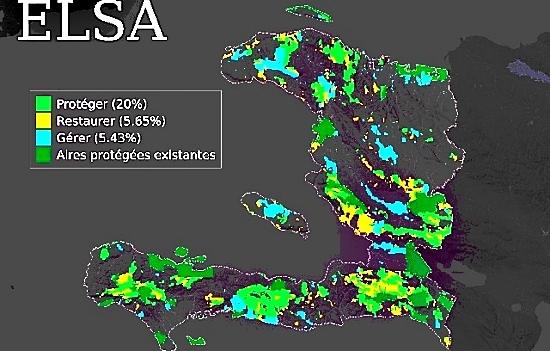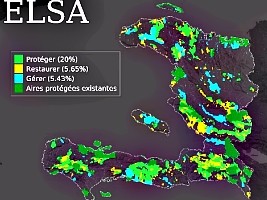|
||||||||||||||||||
|
|
Haiti - Environment : Mapping the areas essential to the maintenance of life 13/02/2022 09:29:24
The first phase of this project was launched in March 2021, with a proof of concept study reviewed by national experts during a first workshop held from 2 to 23 March 2021. Download report of the first workshop : https://www.haitilibre.com/docs/Haiti-Consultation-1-Standard-file.pdf ELSAs are essential areas for conserving critical biodiversity and providing humans with essential ecosystem services, such as carbon storage, food, fresh water, water filtration and disaster risk reduction. By using this tool to process geospatial data, Haiti applies rigorous scientific methods to identify ELSAs based on national priorities and set specific goals for their protection, management and/or restoration. This process is one of the ways the country is working to advance national and international commitments to the Convention on Biological Diversity and the 2030 Agenda for Sustainable Development.  During the project's second workshop, held in June 2021, Haitian stakeholders co-created in real time the first iteration of the Haitian map of critical life sustaining areas that reflectsnational priorities and realities. Note that this exercise is one of the first of its kind in the world. Download Report of the 2nd workshop: https://www.haitilibre.com/docs/Day-1-UNDP-CO-Final.pdf Based on the results of this second phase, representatives of the Ministry of the Environment, UNDP and UNDP-Haiti met in October to finalize the ELSA map for the country, which is now available. Project work will explore how the tool and final maps can support the implementation of key projects in Haiti, such as:
This ongoing work in Haiti inspires similar initiatives in other countries engaged in identifying their ELSAs, including but not limited to: South Africa, Cambodia, Chile, Costa Rica, Colombia, Ecuador and Peru... HL/ HaïtiLibre
|
|
|
Why HaitiLibre ? |
Contact us |
Français
Copyright © 2010 - 2024 Haitilibre.com |



